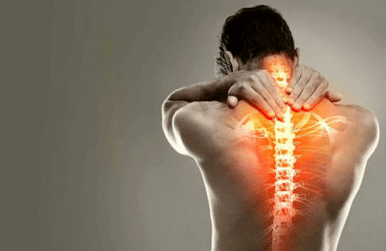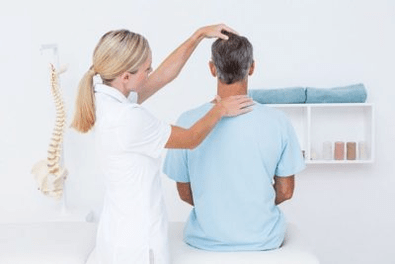Many people today deal with the lack of physical exercise.Dull work in the office, long stays on TV at home, and inappropriate food – these are the main causes of many diseases.One of them can be called osteocartilage in the cervical vertebrae, which is one of the most flowing parts of the human spine.On him, there is a lot of load every day because its main function is to hold the head.
This disease brings serious discomfort to the patient's life and is equally common among men and women.The disease is considered to be progressive and is related to degenerative nutritional diseases of the intervertebral disc, so qualified medical services are required in a timely manner.
Causes of pathological development

Osteochondrosis affects all sectors, but often develops in it given the increased activity in the cervical area.
The disease is conditionally divided into 4 main stages:
- The first is associated with the initial disease of the vertebral disc, which is accompanied by unstable features and with almost no obvious symptoms.
- The second - The gap between the vertebrae decreases and the damage of the annulus begins, the erosion of the nerve roots, and the result is pain.
- Third - When the damage of the ring is already in the final stage, a vertebral hernia can form and there are usually signs of spinal deformation.
- The fourth is the most severe stage of bone growth, where any exercise becomes very painful and nearly impossible, and may lead to disability without treatment.
Currently, there are a large number of tests in young people, including the cervical area.If the disease was previously believed to be age-related and found in patients aged 40, young people aged 18-30 often encounter this problem today.
The causes of this disease are as follows:

- Overweight problem;
- Violating the posture and curvature of the spine;
- delayed metabolic processes in vivo;
- Various trauma in the spine;
- a lot of manual labor and system weight;
- Some sports courses violate the training process;
- Especially general physical exercise is weak, which is the weakness of the back muscle corset;
- The system's body temperature is hypothermia;
- metastasized infectious diseases;
- Live lifestyle, lack of physical effort.
The reasons for limiting cervical regional mobility are also typical.These are muscle cramps, worsening of blood supply, squeezing nerve ends, stenosis of the foramen between vertebrae and development of malnutrition processes on vertebrae and discs.
Symptoms of the disease
The symptoms and characteristics of cervical osteochondrosis are mainly due to invasion of the blood supply by the head and brain.This is due to the fact that the cervical area is filled with blood vessels, so the human brain powers them.
The characteristics of neck pathology are as follows:
- Headache, depending on the degree of the disease, may be severe enough and systemic.
- Dizziness in cervical osteochondrosis is usually accompanied by a loss of consciousness.
- The sound of features in the ears usually reduces hearing;
- Violation of movement coordination, gait;
- vision;
- The temperature of the skin increases, sometimes the overall temperature rises;
- Voice changes, such as the hoarse sound or the presence of hoarseness;
- Poor teeth;
- numbness of fingers, cooling and weakness of hands;
- Neck, throat, contact with the scalp, and sometimes even toothache;
- Pain spreads over the shoulders, shoulders, neck and head or enhancement of movement;
- Nausea and even vomiting may be accompanied by severe pain.
Headache, limitations of fluidity, and other symptoms can all be present in the complex and are different intensities.Often, this directly depends on which particular object is affected by the disease.On this basis, the disease is classified as SO and is called radical syndrome, vertebral artery syndrome, spinal cord compression, free radical syndrome, reflex syndrome, etc.
Treatment of cervical vertebrae bone marrow disease
If treatment for cervical osteocartilage is lacking, the patient may experience typical symptoms of an untreated disease (headache, memory deterioration, temperature, dizziness, etc.) and then experience rather unpleasant consequences.For example, this may be an invasion of brain circulation caused by blood flowing through blood vessels.

To avoid this, it is necessary for patients who notice the first sign of pathology to seek qualified help.
To provide first aid to patients, you can use painkillers and anti-inflammatory drugs (tablets, ointments, injections).You can also heat the distracting medication with distracting medication in snake venom or bee-based venom before visiting the doctor before visiting the doctor.When edema is formed, diuretics should be used or swelling with folk remedies, such as the decay of herbs.As for visiting a doctor, it must be mandatory regardless of the patient's remission during the self-test.
We cannot cure cervical osteochondrosis that is absent from school.
Usually, osteochondrosis in the cervical spine is diagnosed based on the patient's complaint.To confirm the diagnosis, radiological examination, CT or MRI were used.
After confirmation of the diagnosis, the specialist prescribes treatment based on the stage of the disease (individual characteristics of the patient's overall health status).It is worth noting that you can only eliminate the problem in the initial stages of medicine.In the pathological treatments that are beginning to develop, treatment of folk therapies may be very effective.
As for the higher stages of cervical osteochondrosis, their treatment reduces the patient's discomfort, pain and physical pain.Through a competent and comprehensive approach, the main symptoms of the disease can be eliminated and possible aggravated, and the development of spinal pathological processes can be paused.
The comprehensive treatment of the disease involves the use of traditional medicine and non-traditional methods.Similarly, during the remission phase, other treatments for civil remedies are allowed.
Among the most common methods of treating the disease, the following can be destined:

- vacuum therapy;
- Treat with medication;
- acupuncture;
- laser therapy;
- Electrical stimulation;
- Dry traction;
- Magnet treatment;
- Treatment of gymnastics;
- The process of therapeutic massage, etc.
To eliminate pain syndrome, it is usually enough to get the patient through 1-3 treatments.To consolidate active treatment success, approximately 10-15 treatment courses may be required.After removing the acute phase, they turn to treatment for gymnastics and massage.This will help restore blood circulation and strengthen muscle.























